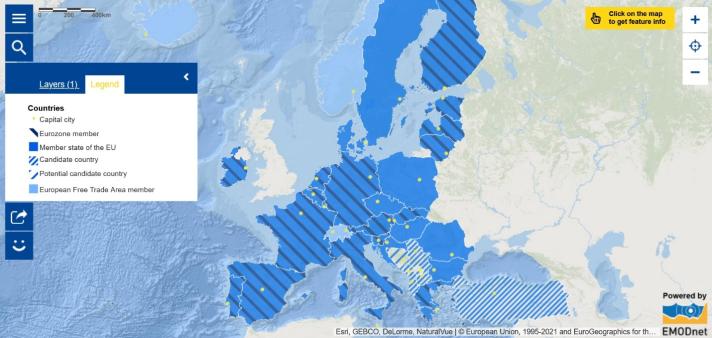On 9 May, we will celebrate Europe Day 2021. The date marks the anniversary of the historic 'Schuman declaration' that was presented by French foreign minister Robert Schuman on 9 May 1950. It is considered to be the beginning of what is now the European Union. Every year, a wide diversity of activities are organized for the public on this date. It is thus a great opportunity to learn more about the European Union’s institutions. The 2021 programme of activities includes the visit of a virtual space as well as activities organized by each institution. Activities can be searched by Member States.
The European Union currently counts 27 Member States and has 24 official languages. On 1 January 2020, the population of the European Union was estimated at 447 million. [1] Approximately 40% of the EU's population lives within 50 km of the sea. [2] European coastal areas face multiple threats including water pollution and eutrophication, loss of biological diversity, urban development, landscape deterioration and coastal erosion. [3]Sea level rise and its impacts in terms of coastal flooding and coastal erosion are sources of concern for people living in coastal regions. Each year around 100,000 people are exposed to coastal flooding in the European Union. In the absence of adaptation, this number is projected to reach 1.6 - 3.9 million by the end of the century. [4] Understanding how the ocean and seas influence us and how we influence the ocean and seas – referred to as ocean literacy – is therefore crucial to living and acting sustainably. This is not only true for people living in coastal regions. We are all directly or indirectly connected to the ocean and seas – even if we live far from the sea – for example through the seafood we eat, the rivers in the region we live in and the benefits that the ocean provides in terms of climate regulation and oxygen production. Achieving the targets of Sustainable Development Goal 14 to conserve and sustainably use the ocean, seas and marine resources is therefore essential for all of us.
Connecting organisations, projects and people across Europe that contribute to ocean literacy and the sustainable management of the ocean is the key objective of the EU4Ocean Coalition. The coalition comprises three communities who are actively working on activities, events and projects dedicated to the ocean: the EU4Ocean Platform for organisations and individuals engaged in Ocean Literacy initiatives, the Youth4Ocean Forum and the Network of European Blue Schools. At the international level, the United Nations Decade of Ocean Science for Sustainable Development (Ocean Decade) provides a ‘once in a lifetime’ opportunity to create a new foundation, across the science-policy interface, to strengthen the management of our oceans and coasts for the benefit of humanity.
What can you do to celebrate Europe Day?
- Explore the Map of the Week to learn about European Union Member States.
- Participate in activities organized by the European Institutions.
- Explore the European Atlas of the Seas in the 24 official languages and follow the lead of the Atlas’ Ambassadors.
- Find out how you can shape the future of Europe.
- Register for European Maritime Day which will take place on 20-21 May 2021.
- Discover the activities of the EU4Ocean Coalition and learn how you can join the Coalition.
The data in this map are provided by the European Commission.
[1] https://ec.europa.eu/eurostat/databrowser/view/tps00001/default/table?lang=en
[2] https://land.copernicus.eu/local/coastal-zones
[3]https://www.eea.europa.eu/themes/water/europes-seas-and-coasts
[4] https://ec.europa.eu/jrc/en/news/new-report-coastal-adaptation-against-sea-level-rise-makes-economic-sense

